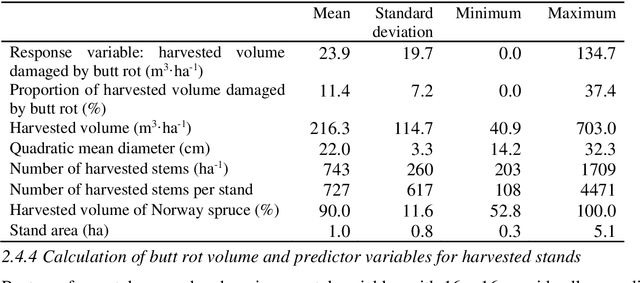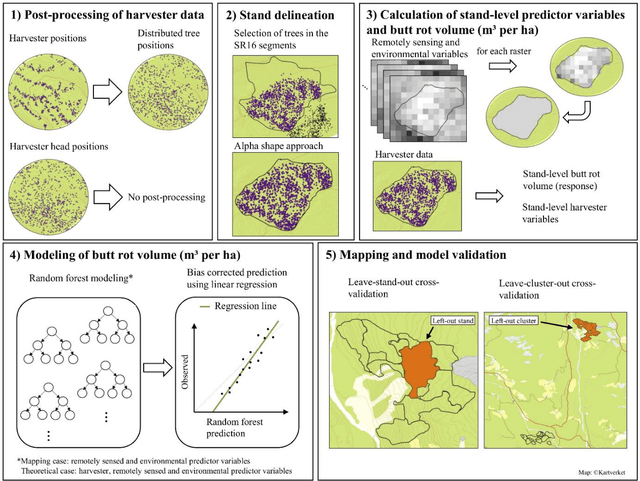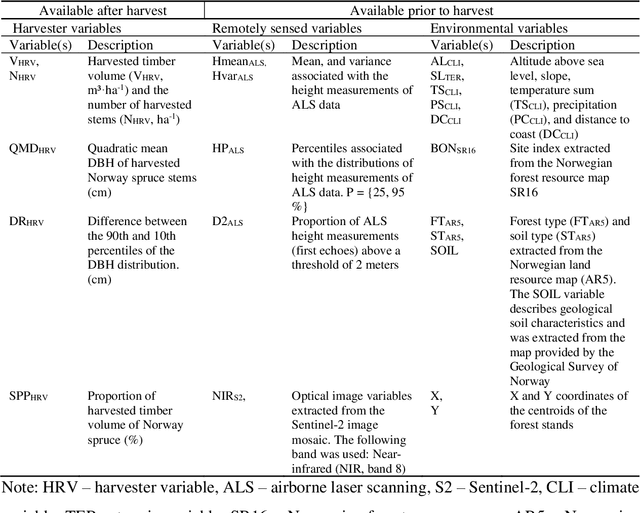Johannes Breidenbach
Lidar-based Norwegian tree species detection using deep learning
Nov 10, 2023



Abstract:Background: The mapping of tree species within Norwegian forests is a time-consuming process, involving forest associations relying on manual labeling by experts. The process can involve both aerial imagery, personal familiarity, or on-scene references, and remote sensing data. The state-of-the-art methods usually use high resolution aerial imagery with semantic segmentation methods. Methods: We present a deep learning based tree species classification model utilizing only lidar (Light Detection And Ranging) data. The lidar images are segmented into four classes (Norway Spruce, Scots Pine, Birch, background) with a U-Net based network. The model is trained with focal loss over partial weak labels. A major benefit of the approach is that both the lidar imagery and the base map for the labels have free and open access. Results: Our tree species classification model achieves a macro-averaged F1 score of 0.70 on an independent validation with National Forest Inventory (NFI) in-situ sample plots. That is close to, but below the performance of aerial, or aerial and lidar combined models.
Prediction of butt rot volume in Norway spruce forest stands using harvester, remotely sensed and environmental data
Jul 09, 2021



Abstract:Butt rot (BR) damages associated with Norway spruce (Picea abies [L.] Karst.) account for considerable economic losses in timber production across the northern hemisphere. While information on BR damages is critical for optimal decision-making in forest management, the maps of BR damages are typically lacking in forest information systems. We predicted timber volume damaged by BR at the stand-level in Norway using harvester information of 186,026 stems (clear-cuts), remotely sensed, and environmental data (e.g. climate and terrain characteristics). We utilized random forest (RF) models with two sets of predictor variables: (1) predictor variables available after harvest (theoretical case) and (2) predictor variables available prior to harvest (mapping case). We found that forest attributes characterizing the maturity of forest, such as remote sensing-based height, harvested timber volume and quadratic mean diameter at breast height, were among the most important predictor variables. Remotely sensed predictor variables obtained from airborne laser scanning data and Sentinel-2 imagery were more important than the environmental variables. The theoretical case with a leave-stand-out cross-validation achieved an RMSE of 11.4 $m^3ha^{-1}$ (pseudo $R^2$: 0.66) whereas the mapping case resulted in a pseudo $R^2$ of 0.60. When the spatially distinct k-means clusters of harvested forest stands were used as units in the cross-validation, the RMSE value and pseudo $R^2$ associated with the mapping case were 15.6 $m^3ha^{-1}$ and 0.37, respectively. This indicates that the knowledge about the BR status of spatially close stands is of high importance for obtaining satisfactory error rates in the mapping of BR damages.
 Add to Chrome
Add to Chrome Add to Firefox
Add to Firefox Add to Edge
Add to Edge